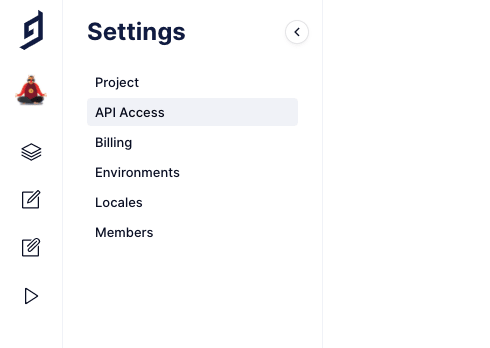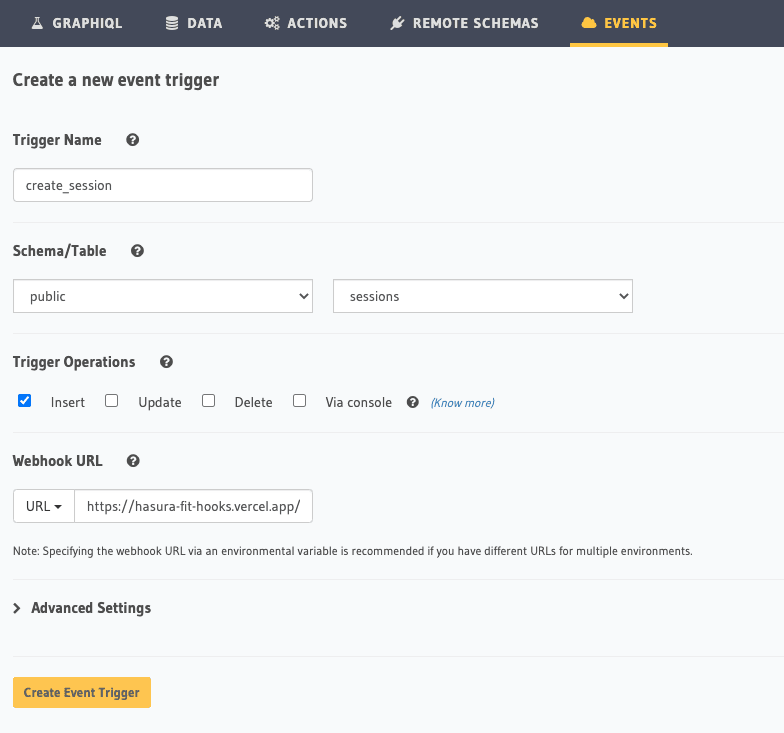Hasura Fit: Setting up Serverless Functions

Jesse Martin
Posted on August 13, 2020

Why Vercel Serverless Functions?
There are many serverless providers out there. Many of them are incredibly easy to set-up. Because we are hosting our NextJs web app on Vercel (the same company that made the framework) - it makes sense to stay in the same ecosystem.
It’s also incredibly easy to set up. If you inspect the code involved, it really is a matter of defining the function you want to handle a serverless request, use the CLI to publish and you have a “micro-service” ready to go.
Environment Variables
The Vercel CLI for local testing does not support the .env.[environemnt] pattern defined in our Nextjs guide, so we’ll simply use a .env file, being sure to avoid checking this file into version control. Begin by copying the template with cp ./.env.template ./.env.
We’ll add:
GRAPHCMS_MUTATION_TOKEN
GRAPHCMS_API
Both of which we can find in the GraphCMS API Settings.
Server Functions
Our code for the webhook handler is rather succinct.
Essentially, we perform three actions:
- We inspect incoming requests to ensure that we have a successful payload that includes the slug of a workout performed by a user from Hasura.
- We fetch the popularity field of that workout from our GraphCMS API directly.
- We mutate the GraphCMS workout model by incrementing the popularity field by one.
Again, all the code is provided in the repository.
const axios = require("axios");
module.exports = async (req, res) => {
const ax = axios.create({
baseURL: process.env.GRAPHCMS_API,
timeout: 1000,
headers: { Authorization: `Bearer ${process.env.GRAPHCMS_MUTATION_TOKEN}` },
});
let message;
const { body } = req;
if (body) {
const {
trigger,
event: {
data: {
new: { slug },
},
},
} = body;
let {
data: {
data: {
workout: { popularity },
},
},
} = await ax.post("/master", {
query: `query GetWorkout($slug: String) {
workout(where: {
slug: $slug
}) {
title
id
slug
popularity
}
}`,
variables: { slug },
});
let mutationResponse = await ax.post("/master", {
query: `mutation IncWorkout($slug: String!, $popularity: Int) {
updateWorkout(where: {slug: $slug}, data: {popularity: $popularity}) {
id
popularity
}
publishWorkout(where: {slug: $slug}, to: PUBLISHED) {
id
}
}
`,
variables: { slug, popularity: popularity + 0 + 1 },
});
console.log(popularity);
let {
data: {
data: {
updateWorkout: { id },
},
},
} = mutationResponse;
message = `ID ${id} popularity is now ${popularity + 0 + 1}`;
}
res.status(200).send({ message });
};
Next: Set up Vercel

Posted on August 13, 2020
Join Our Newsletter. No Spam, Only the good stuff.
Sign up to receive the latest update from our blog.
Related

November 30, 2024






